Part I: Comprehensive Overview of Network Server Racks
Network Server Racks are the backbone of any modern data center and an essential infrastructure component for businesses of all sizes. In this section, we provide an extensive guide that delves into the many facets of Network Server Racks—from the variety of types available and the key technical specifications to the diverse applications in today's technology-driven enterprises. With decades of advances in manufacturing technology, processes like laser cutting, bending, welding, and assembly have refined the production of these products, ensuring that every rack meets strict requirements for durability, safety, and performance. HULK Metal, a renowned OEM factory in China, exemplifies these innovations through its advanced, integrated supply chain and commitment to quality.
1. Introduction to Network Server Racks
Network Server Racks serve as structured enclosures where servers, switches, routers, and other equipment are securely mounted. Their purpose is not only to support heavy IT equipment but also to facilitate organized cable management, efficient cooling, and increased safety by safeguarding the hardware. With the ever-increasing demand for reliable data centers and network infrastructures, these racks have evolved from simple metal frames into complex, modular systems that reflect the needs of the modern digital era.
Key functions of Network Server Racks include:
Equipment Organization:
Facilitating neat placement of network components to improve accessibility.
Thermal Management:
Integrating features to promote adequate airflow and optimal temperature control.
Cable Management:
Incorporating design considerations that enable efficient routing and protection of cables.
Security:
Enhancing physical security with locking mechanisms and robust construction materials.
The evolution from basic shelving units to sophisticated enclosure systems has been driven by the rapid expansion of IT services worldwide. Data centers, telecommunications, financial institutions, and research facilities depend on these racks to maintain uptime and ensure continuous, safe operation.
2. Types and Classifications of Network Server Racks
There is a broad spectrum of Network Server Rack types available in the market today, each designed with a unique set of features tailored to various operational environments. Understanding the differences is crucial for IT administrators and purchasing managers to select the most suitable option.
2.1 Standard Rack Enclosures
Standard rack enclosures usually come in a 19-inch format, which is the most widely accepted international standard for mounting equipment. They are built for robustness and security and typically feature:
Fixed or Adjustable Mounting Rails: To accommodate different depth specifications.
Lockable Doors and Panels: To restrict unauthorized access.
Ventilated Front and Rear Doors: Allowing for optimal heat dissipation.
Heavy-Duty Construction: Often fabricated from cold-rolled steel for increased durability.
2.2 Open Frame Racks
Open frame racks are designed for environments where easy access is a priority over physical security. Their open design facilitates:
Unobstructed Airflow: Enhancing the cooling of equipment.
Ease of Access: Simplifying the installation and maintenance of network equipment.
Cost-Effective Installation: Minimizing overall costs due to reduced materials.
However, these designs often lack the security features found in enclosed solutions, making them more suited for controlled environments.
2.3 Wall-Mount Racks
Wall-mount racks are ideal for organizations with limited floor space or for supporting smaller networks. They are typically used in:
Branch Offices: Where space is at a premium.
Retail and Point-of-Sale Environments: To secure essential equipment without occupying floor area.
Remote or Small Scale Applications: Serving as a compact solution with adequate cooling and cable management options.
2.4 Portable and Mobile Racks
These racks are designed for scenarios requiring mobility, such as temporary installations or on-site troubleshooting. Key features include:
Lockable Casters: For ease of relocation while ensuring stability.
Robust Frames: To protect sensitive equipment during transit.
Flexible Mounting Options: Accommodating a range of devices and configurations.
2.5 Specialized Racks
Beyond the typical formats, specialized Network Server Racks cater to unique operational requirements. These include:
High-Density Racks: Designed to support a higher number of servers within a confined space.
Seismic-Proof Racks: Engineered for regions with high seismic activity, incorporating advanced locking systems.
Climate-Controlled Racks: Featuring built-in systems to maintain strict temperature and humidity levels, crucial for mission-critical applications.
3. Key Parameters and Specifications
Understanding the technical parameters is essential for choosing a rack that fits a particular data center or IT environment. Network Server Racks are defined by a series of specifications that dictate their usability, reliability, and overall performance.
3.1 Dimensions and Form Factors
The standard 19-inch rack width is common in almost every server rack, while heights and depths vary. Common height measurements are given in Rack Units (RUs), where 1 RU is 1.75 inches tall. Depth specifications can range from shallow (e.g., 600 mm) to deep (over 1200 mm) based on the equipment and cabling requirements.
3.2 Material Composition
Server racks are predominantly made of:
Cold-Rolled Steel: Offers high strength-to-weight ratio.
Aluminum: Sometimes used for lighter designs where portability is key.
Powder-Coated Finishes: Enhance resistance to corrosion and physical wear while improving aesthetic appeal.
3.3 Load Capacity and Structural Integrity
Load-bearing capacity is critical for the safe support of heavy servers and network components. Reliable racks are often rated for a maximum load per RU, and the overall construction must withstand both static and dynamic loads while maintaining rigidity. The welding, bending, and assembly processes play a vital role in ensuring these properties are met.
3.4 Ventilation and Cooling
Efficient thermal management requires that network racks integrate proper ventilation. Features include:
Ventilated Doors: Often perforated or meshed to allow unrestricted airflow.
Additional Ventilation Panels: May be added in high-density racks to promote active cooling.
Optimized Layout Designs: That facilitate the natural convection of warm air and the intake of cooler air.
3.5 Cable Management Systems
A well-designed rack includes integrated solutions for cable management:
Cable Trays and D-Rings: To route and secure cables neatly.
Velcro Straps or Cable Ties: Often used to bundle cables, reducing clutter and interference.
Dedicated Pathways: For both power and data cables, minimizing the risk of network disruptions due to tangled wiring.
3.6 Security and Accessibility Features
Depending on the deployment environment, various security features are essential, including:
Lockable Doors and Side Panels: Prevent unauthorized physical access.
Cable Entry and Exit Points: Designed to protect the integrity of the equipment while maintaining safe operating conditions.
Tool-less Access Designs: That allow for rapid configuration changes and emergency interventions.
4. Common Styles and Configurations
The design and style of a Network Server Rack may vary significantly depending on industry demands. Below are some of the prevalent styles, along with their unique characteristics and applications.
4.1 Standard Data Center Racks
These are the workhorses of modern data centers—robust, secure, and designed for high-capacity environments. Their construction prioritizes:
Sturdiness: To hold heavy servers and equipment.
Integrated Ventilation: For proper temperature regulation.
Ease of Maintenance: Through accessible cable management systems and removable panels.
4.2 Modular and Configurable Racks
Modular racks allow users to add or remove components as needed. Key benefits include:
Scalability: They can expand in tandem with the growing needs of the data center.
Customization: Options to include add-on accessories like additional cooling systems, battery backup compartments, or specialized mounting trays.
Flexibility: For varied network deployments, from small offices to large enterprise-level implementations.
4.3 Open Frame Versus Closed Cabinets
The decision between open frame and closed cabinet designs depends on the environment:
Open Frame: Favored for environments that are controlled and require maximum airflow. They are typically less expensive and easier to service.
Closed Cabinets: Provide enhanced security and dust protection. Ideal for areas where physical access must be restricted and environmental control is paramount.
4.4 Portable Rack Systems
Designed for temporary setups or dynamic working environments, portable racks exhibit:
Mobility: Via integrated casters and ergonomic designs.
Versatility: Often used in field operations, trade shows, or mobile IT labs.
Rapid Deployment: Essential for organizations that require on-the-fly reconfiguration.
5. Application Scenarios for Network Server Racks
The applications of Network Server Racks extend far beyond the traditional data center. Below is an outline of the diverse settings in which these systems are deployed:
5.1 Enterprise Data Centers
Large-scale data centers in enterprise environments depend on high-density, robust server racks to manage thousands of servers and network switches. In these cases, racks must offer:
High Load Capacity: To support a vast array of hardware.
Advanced Cooling Solutions: To ensure consistent operation under heavy workloads.
Efficient Space Utilization: Enabling maximized capacity within limited floor space.
5.2 Telecommunications and ISP Infrastructure
Network providers use specialized racks designed to support the critical infrastructure needed to maintain telecommunications and internet services. These include:
Seismic-Resistant Models: For installations in earthquake-prone areas.
Modular Designs: For rapid expansion and reconfiguration as network demands grow.
Rigorous Quality Standards: To manage the continuous operation of communication networks.
5.3 Small and Medium-Sized Businesses
SMBs often require compact, cost-effective server racks that can be easily installed in office environments or server rooms. Characteristics include:
Compact Footprints: With effective cable management and cooling integrated.
Affordability: Without sacrificing essential performance features.
Ease of Installation: Allowing for swift deployment and minimal disruption to operations.
5.4 Remote and Industrial Deployments
In industrial applications, including remote monitoring stations, manufacturing plants, and IoT hubs, server racks must withstand more challenging environments:
Rugged Construction: Built from materials that resist vibration, dust, and moisture.
Enhanced Cooling Mechanisms: To operate reliably in extreme conditions.
Flexible Configurations: That can be adapted to unique site requirements and remote access needs.
6. Manufacturing Excellence and Quality Standards
The production of quality Network Server Racks requires cutting-edge manufacturing processes and strict adherence to quality standards. HULK Metal, as a leading example in China, incorporates advanced techniques such as:
Laser Cutting and Precision Bending:
Ensuring that each component meets precise design specifications.
Robust Welding Processes:
That secure the structural integrity of the racks.
Automated Assembly Lines:
Increasing the consistency and repeatability of production.
Comprehensive Quality Control Measures: Including in-line inspections, load testing, and final product evaluation.
Manufacturers of Network Server Racks typically adhere to international certifications and quality standards such as:
ISO 9001:
For quality management systems.
UL and CE Certifications:
Ensuring safety and compliance for electrical and structural aspects.
RoHS Compliance:
For environmental and material safety standards.
7. The Integration of Advanced Technologies in Rack Design
Modern server racks are being designed with a blend of traditional engineering methods and innovative technologies to address evolving IT challenges. Some of these advancements include:
7.1 Smart Rack Systems
Smart racks incorporate monitoring sensors that track temperature, humidity, and even the integrity of network cables. These features allow for:
Real-Time Analytics: To preemptively address potential issues.
Automated Alerts: Triggering maintenance notifications if parameters deviate from acceptable ranges.
Integration with Data Center Infrastructure Management (DCIM) Systems: Enhancing the overall operational efficiency.
7.2 Energy Efficiency Measures
With the rising cost of energy and the need for sustainable operations, energy-efficient designs play a major role in modern rack systems:
Optimized Airflow Designs: That reduce the reliance on power-hungry cooling systems.
LED Lighting and Low-Power Fans: Which lower overall energy consumption.
Intelligent Power Distribution Units (PDUs): That balance load and regulate energy delivery across devices.
7.3 Customization for Specialized Environments
Increasingly, specialized environments demand racks with unique configurations. These can include:
EMI Shielding: For sensitive equipment in high-interference zones.
Integrated Fire Suppression Systems: In data centers handling critical operations.
Modular Power Backup Solutions: Ensuring continuity in the event of power interruptions.
8. The Role of HULK Metal in the Server Rack Industry
HULK Metal stands out as a premier manufacturer and OEM provider in China. With a robust supply chain that integrates raw material procurement, production, quality control, packaging, logistics, and after-sales support, HULK Metal delivers reliable Network Server Rack solutions tailored to customer-specific designs and requirements. Notably, the company is renowned for:
Advanced Manufacturing Techniques: Utilizing laser cutting, bending, welding, and automated assembly lines.
Comprehensive Quality Assurance: Ensuring every rack meets stringent international standards.
Efficient Supply Chain Management: Offering a turnkey solution from design approval to after-sales service including returns, replacements, and additional shipments.
Customer-Centric Service Model: Although design and blueprint modification services are not provided, the focus remains on delivering high-quality, custom solutions based on precise customer drawings and project specifications.
Over the decades, HULK Metal has cemented its reputation as a dependable partner for businesses globally, providing solutions that not only meet but exceed the rigorous demands of modern network environments.
Part II: How to Find a Suitable Network Server Rack Supplier from China
Finding a reliable supplier for Network Server Racks in China requires a comprehensive evaluation process. In this section, we provide a detailed guide—spanning over 2000 words—designed to help procurement managers, IT infrastructure planners, and business owners navigate the complexities of sourcing high-quality server racks. This guide leverages insights into manufacturing processes, quality control protocols, and effective supplier evaluation strategies to ensure that you choose a supplier capable of delivering robust and efficient data center solutions.
1. Understanding Your Requirements
The first step in selecting a supplier is to thoroughly assess your own requirements. Start by determining the specific needs of your data center or network environment:
Capacity and Scalability: Evaluate current load requirements as well as potential future expansions. Do you need high-density racks that can support a surge in hardware, or are smaller, more compact units sufficient?
Environmental Considerations: Examine the operating environment. Is the server room air-conditioned, or do you require specialized cooling features? Will the racks be located in a controlled indoor space or a more challenging industrial setting?
Security Needs: Decide whether you require enclosed, lockable cabinets to guard sensitive equipment, or if open frame designs would suffice for easy access.
Customization Options: Identify any specific design requirements dictated by the equipment you plan to house—such as increased cable management features, specialized ventilation, or additional modular components.
A clear set of criteria will help streamline the selection process and allow you to communicate your needs clearly to potential suppliers.
2. Conducting Market Research
With your requirements in hand, the next step is to perform thorough market research. China, being a global leader in manufacturing, offers a wide range of suppliers, each with its own strengths and areas of expertise. Here are some strategies to conduct effective market research:
2.1 Online Directories and Trade Platforms
Platforms such as Alibaba, Global Sources, and Made-in-China.com are valuable starting points for identifying potential suppliers. These platforms allow you to:
Review Company Profiles: Check for company history, manufacturing capacity, and areas of specialization.
Examine Customer Reviews and Ratings: Understand how well previous customers have been served, including responsiveness, quality, and after-sales support.
Compare Product Specifications: Look for detailed product descriptions and technical specifications to identify suppliers who meet your exact requirements.
2.2 Industry Trade Fairs and Exhibitions
Participating in industry trade fairs such as the Canton Fair or other specialized electronics and manufacturing expos provides direct access to suppliers. These events offer the opportunity to:
Conduct Face-to-Face Meetings: Evaluate supplier facilities, ask detailed questions, and see live demonstrations of the manufacturing process.
Establish Personal Connections: Build rapport with key personnel, which can be crucial for future negotiations and quality assurance.
Obtain Real-Time Updates: Gain firsthand insights into the latest technologies, quality control measures, and manufacturing advancements deployed by leading suppliers.
2.3 Consultation with Industry Experts
Engaging consultants or industry experts with experience in the network infrastructure sector can be immensely beneficial. These professionals can offer:
Insightful Evaluations: Based on their experience, experts can guide you toward suppliers known for quality and reliability.
Personal Recommendations: Leverage industry networks to receive firsthand accounts of supplier performance.
Technical Assessments: Experts can help analyze product samples and manufacturing processes to ensure that they meet industry standards.
3. Evaluating Supplier Credentials
Once you have compiled a list of potential suppliers, it's time to evaluate them based on specific credentials and performance indicators.
3.1 Verification of Certifications and Compliance
High-quality Network Server Racks must meet international certification standards. When evaluating a supplier, verify that they possess:
ISO Certifications: Such as ISO 9001, which demonstrates a commitment to quality management systems.
Safety and Regulatory Approvals: Certifications like UL (Underwriters Laboratories) and CE (Conformité Européenne) are critical for ensuring the racks meet electrical and structural safety standards.
RoHS Compliance: Guaranteeing that the materials used are free from hazardous substances.
Ensure that the supplier provides up-to-date certification documents and is willing to discuss third-party test reports that verify product integrity.
3.2 Production Capacity and Supply Chain Integration
A supplier's capacity to handle your order volume without compromising on quality is paramount. Key aspects to assess include:
Manufacturing Facilities: Evaluate the scale and sophistication of the production facility. Modern factories equipped with advanced machinery for laser cutting, bending, welding, and assembly are more likely to produce consistent, high-quality products.
Supply Chain Robustness: Consider how the supplier manages its raw material sourcing, quality control, and logistics. A well-organized supply chain minimizes delays and ensures the prompt delivery of orders.
Customization Capabilities: Determine whether the supplier can accommodate custom designs based on your specific drawings and technical requirements. Although some suppliers, such as HULK Metal, do not provide design modifications, they excel in translating your specifications into top-tier products.
3.3 Quality Control and After-Sales Support
Quality control is an ongoing process that should be integrated into every stage of production. When analyzing a supplier's quality control measures, ask about:
In-Line Quality Checks: Procedures implemented during production to inspect for defects or inconsistencies.
Final Product Testing: Rigorous assessments prior to shipment, including load capacity tests, temperature cycling, and durability assessments.
After-Sales Policies: Clear policies on returns, exchanges, and additional shipments if product defects are discovered post-delivery. A reliable supplier should offer full after-sales support and demonstrate a commitment to customer satisfaction.
4. Assessing Communication and Responsiveness
Communication is a cornerstone of any successful supplier relationship. In your evaluation process, focus on:
Language Proficiency: Ensure that the supplier's communication team is proficient in English or can provide reliable translation support. Effective communication minimizes misunderstandings and errors.
Responsiveness: Track how quickly the supplier responds to inquiries, provides quotations, and addresses concerns. Timely communication is a strong indicator of a supplier's commitment to service.
Transparency: A reputable supplier will be open about their production schedules, quality issues, and potential delays. Request detailed documentation and be wary of suppliers who avoid sharing operational insights.
5. On-Site Inspections and Audits
If feasible, arrange for an on-site inspection of the supplier's manufacturing facilities. An on-site audit can reveal:
Real-Time Production Practices: Verify that the processes such as laser cutting, bending, welding, and assembly align with your quality expectations.
Workforce Competency: Observe how employees handle production and quality control tasks. Skilled labor is essential for maintaining high manufacturing standards.
Facility Cleanliness and Organization: Well-maintained facilities are often indicative of meticulous quality management practices.
For companies unable to conduct a visit personally, consider hiring a third-party inspection agency that specializes in evaluating Chinese manufacturing sites. This added layer of evaluation can provide an objective assessment of the supplier's capabilities and reliability.
6. Negotiating Terms and Building a Partnership
Once you have identified a potential supplier, the next step is negotiating contractual terms that safeguard your interests and foster a strong long-term relationship.
6.1 Pricing, Payment Terms, and Lead Times
Discuss the following aspects in detail:
Pricing Models: Compare unit costs and explore price breaks for larger orders. Ensure that you are clear about what is included in the cost (e.g., packaging, quality inspections, shipping).
Payment Terms: Negotiate payment schedules that may include initial deposits, progress payments, and final settlement upon successful delivery.
Production Lead Times: Confirm realistic timelines for order fulfillment, taking into account manufacturing, quality control, and logistics. Clear milestones and timelines should be documented in the agreement.
6.2 Warranty and Liability
Include clauses that protect both parties:
Warranty Periods: Establish clear warranty terms covering product defects or deviations from specifications. A robust warranty indicates supplier confidence in their manufacturing process.
Liability Terms: Define responsibilities in the case of product failures or delays. Ensure that after-sales support clauses, including return, exchange, and replenishment policies, are firmly integrated into the contract.
6.3 Building Long-Term Relationships
Creating a long-term partnership with your supplier can lead to numerous benefits:
Consistent Quality: Long-standing relationships encourage suppliers to maintain high standards.
Priority Treatment: Trusted partners may receive preferential pricing, expedited orders, or access to new product lines.
Joint Innovation: In some cases, long-term collaborations can spur joint innovation, wherein both parties work together to improve product design and production processes.
Maintaining regular communication, periodic reviews of supplier performance, and inviting feedback fosters a healthy, sustainable business relationship.
7. Leveraging Technology for Supplier Evaluation
Modern technology offers tools that can assist in supplier evaluation and management:
Data Analytics Platforms: Use analytics to track supplier performance metrics over time, including delivery punctuality, product quality, and cost competitiveness.
Digital Quality Control Systems: Platforms that offer real-time tracking of production parameters and quality assurance scores can provide added transparency.
Supply Chain Management Software: Integrated systems that monitor and track the complete supply chain help ensure that orders meet agreed standards and timelines.
Embracing these technologies ensures that you not only choose the right supplier but also manage the relationship effectively for continuous improvement.
8. Case Studies and Success Stories
Examining real-world success stories can provide valuable insights. Consider the example of HULK Metal—a supplier renowned for its comprehensive service model. HULK Metal's expertise in Network Server Rack production is characterized by:
Integrated Supply Chain Management: From raw material procurement to final delivery and after-sales service.
Advanced Manufacturing Processes: Utilizing state-of-the-art laser cutting, bending, welding, and assembly technologies.
Rigorous Quality Control Protocols: Ensuring every product meets stringent performance and safety standards.
Responsive Customer Service: Providing timely support and clear communication throughout the project lifecycle.
These qualities have helped many companies build resilient, efficient data center infrastructures. By studying such case examples, you can benchmark your expectations and requirements when negotiating with potential suppliers.
9. Practical Tips for Supplier Selection
Below are some practical tips distilled from extensive market research and industry practices:
Request Detailed Quotations: Ensure that all aspects—materials, labor, packaging, and shipment—are itemized.
Examine Sample Products: Before full-scale orders, request samples to assess manufacturing quality and workmanship.
Consider the Total Cost of Ownership: Evaluate not only the unit price but also additional costs such as logistics, quality checks, and potential delays.
Check References and Past Projects: Contact previous customers to get insights into the supplier's reliability and after-sales performance.
Negotiate Flexibility: Build clauses that allow adjustments in production schedules or customizations as your needs evolve.
10. Risks and Mitigation Strategies
Even with detailed research, risks exist in any international supply chain. Common challenges and mitigation strategies include:
10.1 Quality Variations
Risk: Inconsistent quality levels due to fluctuating production standards.
Mitigation: Implement strict quality control measures and incorporate third-party inspections at key stages in the production process.
10.2 Communication Barriers
Risk: Misunderstandings arising from language differences or cultural nuances.
Mitigation: Use bilingual project managers or trusted local representatives who can facilitate clear, effective communication.
10.3 Shipping and Logistics Delays
Risk: Delays due to logistical issues or customs clearance.
Mitigation: Negotiate clear shipping terms and maintain a buffer in production timelines to absorb potential delays.
10.4 Intellectual Property and Design Security
Risk: Exposure of sensitive design data during production.
Mitigation: Use legally binding Non-Disclosure Agreements (NDAs) and work only with suppliers that have a proven track record in handling confidential information responsibly.
11. Forming a Strategic Partnership
Selecting a supplier should be viewed as the beginning of a strategic partnership. To nurture this relationship:
Regular Reviews: Hold quarterly performance reviews to assess quality, delivery times, and service response.
Feedback Mechanisms: Set up clear channels for ongoing feedback to both parties.
Joint Improvement Initiatives: Collaborate on areas such as process optimization, innovative design improvements, and efficiency enhancements. This proactive approach not only addresses immediate needs but also builds a foundation for future cooperation.
12. Final Checklist for Choosing a Supplier
Before finalizing your choice, verify that the potential supplier meets the following checklist:
Comprehensive product portfolio that aligns with your technical requirements.
Verified certifications and robust quality control mechanisms.
Transparent communication channels and reliable responsiveness.
Favorable pricing, clear lead times, and after-sales support.
Positive references and demonstrated success through case studies.
Strong supply chain integration and logistical capabilities.
Conclusion
Network Server Racks are a critical component of modern IT infrastructure. They provide the necessary physical support, ventilation, and cable management needed to ensure that servers and networking hardware operate reliably under heavy workloads. Whether you are upgrading your data center, setting up a new network installation, or scaling your operations, understanding the technical specifications, types, and design nuances of server racks is paramount to a successful deployment.
Equally important is the supplier you choose to partner with. China offers a myriad of experienced manufacturers, and through a systematic selection process—emphasizing certifications, production capacity, quality controls, and transparent communication—you can secure a dependable source for your Network Server Racks. Companies like HULK Metal, with their comprehensive approach from raw material sourcing to robust after-sales service, exemplify the level of excellence you should expect.
In summary, whether you are assessing the technical complexities of Network Server Racks or navigating the challenges of international supplier selection, a thorough understanding and a methodical approach will ensure that your data center infrastructure is both resilient and efficient. Armed with the insights provided in this blog, you can confidently seek out a supplier that not only meets technical specifications but also offers long-term reliability, innovative production practices, and exceptional customer service.
By following this detailed guide, you are now equipped with the knowledge needed to both understand the multifaceted world of Network Server Racks and embark on a successful procurement journey in China. With over 5000 words of in-depth content covering both technical specifications and supplier evaluation strategies, we hope this blog serves as a definitive resource for decision-makers in the IT and data center industries.
Embrace the insights, apply the practical tips, and harness the power of a well-chosen supplier to drive robust, efficient, and secure network infrastructure for your enterprise.
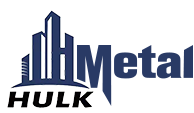
 Precast Concrete Accessories
Precast Concrete Accessories

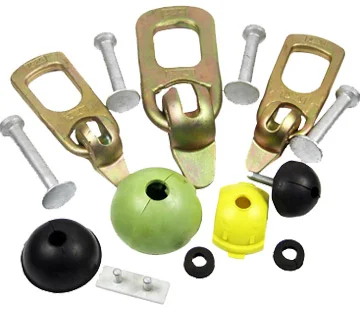
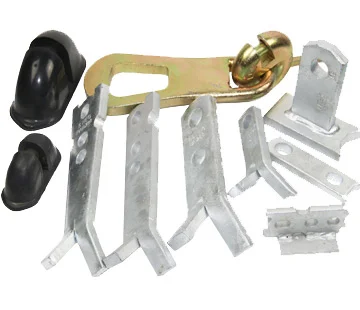

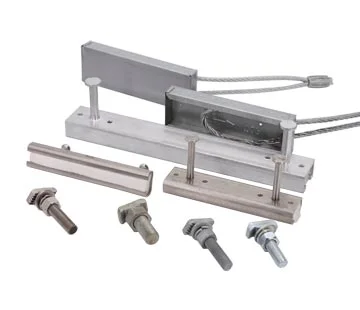

 Guardrail & Handrail Systems
Guardrail & Handrail Systems
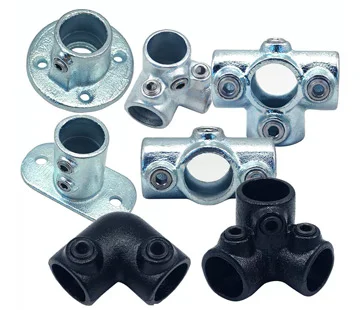

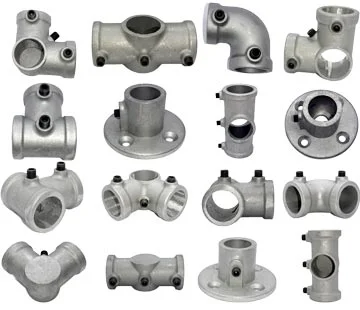
 Metal OEM Parts
Metal OEM Parts
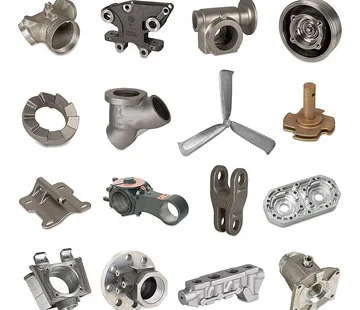
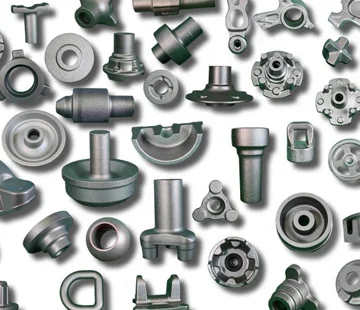
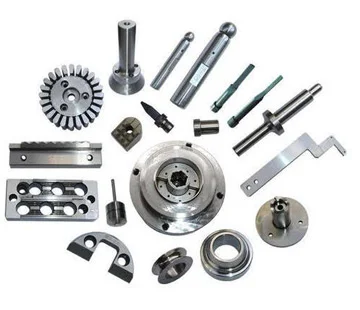
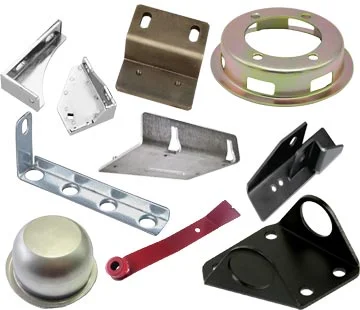
 Network Server Rack Accessories
Network Server Rack Accessories






 Wire Rope Cable Puller Griper
Wire Rope Cable Puller Griper
 Aluminum Parts
Aluminum Parts
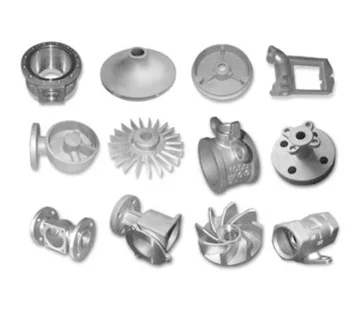
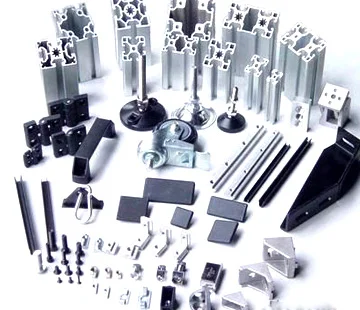
 Pump & Valve Parts
Pump & Valve Parts
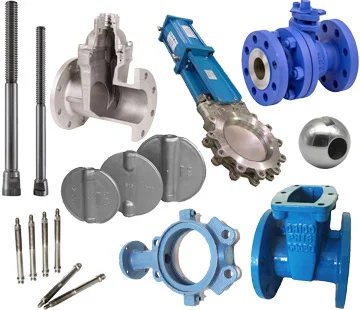
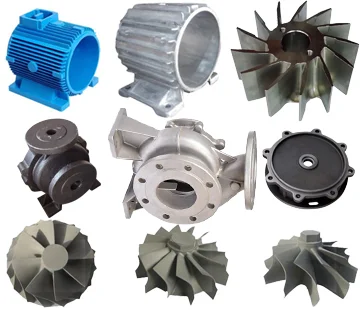









 Metal OEM Parts
Metal OEM Parts 



 Network Server Rack Accessories
Network Server Rack Accessories 





 Wire Rope Cable Puller Griper
Wire Rope Cable Puller Griper 








